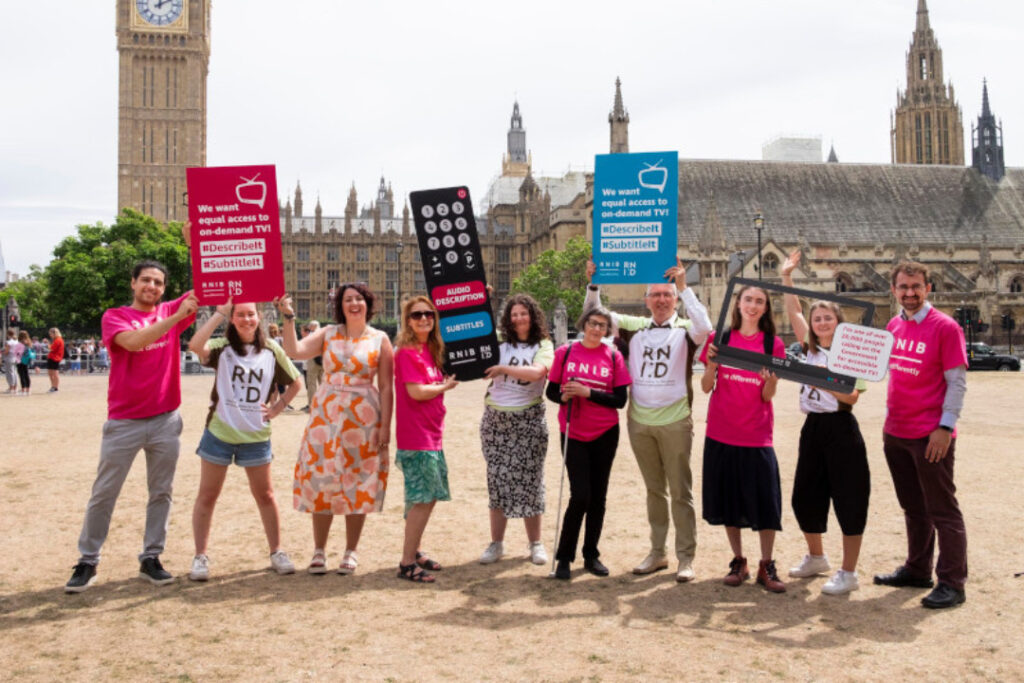
The Government recently published a Draft Media Bill, a proposed law that would change the way in which broadcasting in the UK is regulated. Included in the Bill is a proposed clause that would compel on-demand broadcasters to offer minimum levels of subtitles on on-demand services. RNID’s Rob Geaney, Campaigns and External Affairs Lead, talks us through this new Bill and what is next for our Subtitle It campaign.
We welcome the fact that the Government have published it’s Draft Media Bill and signalled it’s commitment to regulate for minimum levels of subtitles and signings on on-demand TV services, but some of you might be asking: ‘haven’t we been here before?’. And the answer is an annoying and frustrated ‘yes’. In 2017 we secured an amendment to the Digital Economy Act which allowed the Government to set minimum quotas for on-demand TV.
So what’s going on? In this blog we will set out what the proposed Media Bill says, why it is a step forward for accessible TV and the work that RNID will do to ensure the Bill leads to a place where on-demand TV becomes more accessible (spoiler, we will need your help again).
The Draft Media Bill
The Government’s Draft Media Bill contains a provision which sets out the minimum level of on-demand content that broadcasters will have to provide with subtitles and signing. This means that within four years of taking effect on-demand broadcasters will have to subtitle 80% of their content and provide signing on 5%. There will also be an interim target of 40% of content with subtitles and 2.5% with signing in two years. These are the recommendations that the regulator, Ofcom, suggested to Government in July 2021.
This is good news. It is the first time that the Government have publicly committed themselves to these quotas. It demonstrates that we are winning the argument. This is thanks to the 25,000 people who signed our petition with RNIB on this issue.
How is the Draft Media Bill different from the Digital Economy Act?
The 2017 Digital Economy Act contained a provision which meant Government could impose quotas for minimum levels of subtitles, signing and audio description on on-demand providers. The 2017 Act did not say what those quotas would be, instead it said the government and the regulator would spend some time working out what the quotas should be before passing secondary legislation (essentially a mini-law that can be passed with much less parliamentary scrutiny). We have been waiting for the mini-law ever since.
The Draft Media Bill contains the quotas. They are priced in and will have been set into law when Parliament agrees the Bill. If the Media Bill becomes law we will not then be waiting, again, for secondary legislation setting out the quotas.
What’s next?
Because this is a Draft Bill it will not move straight to parliament to be debated just yet. Instead, the Government will use the Draft Bill as a basis for further discussion on the proposals they are making. We do not yet know how long this discussion will last and when the legislation will begin its passage through Parliament.
When the Bill does come to Parliament, we will need your help. We want MPs to know how important accessible TV is for you and we would want to resist any attempt to water down those quotas.
Sign up to the campaigns network
If you want to know how you can help us when the Media Bill is being debated by MPs then you can sign-up to our campaigns network and be the first to know.
